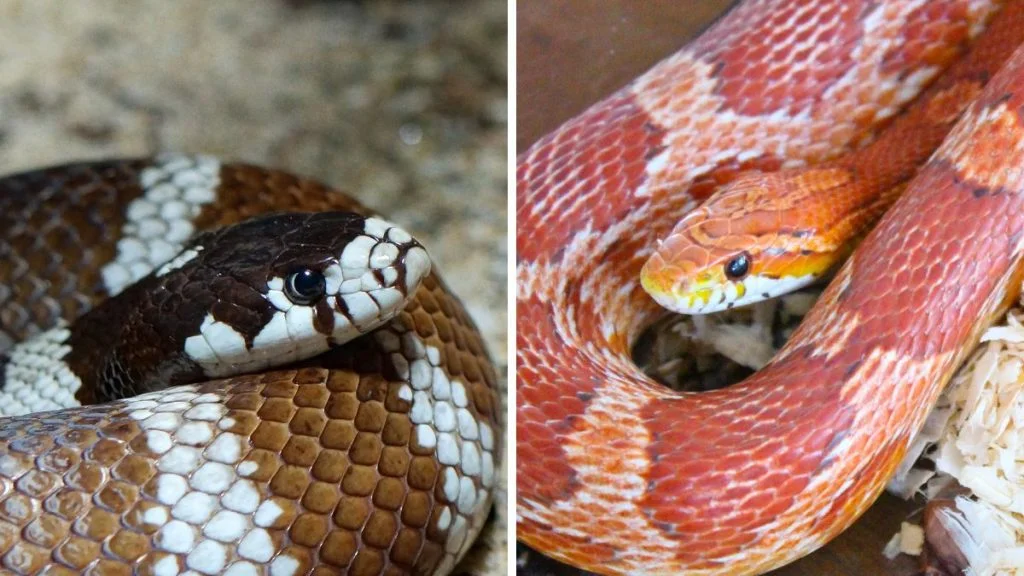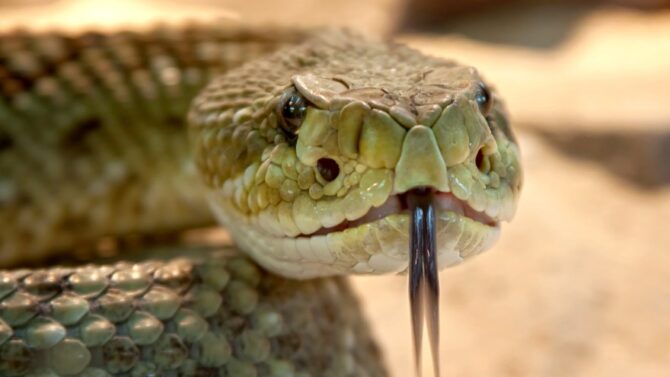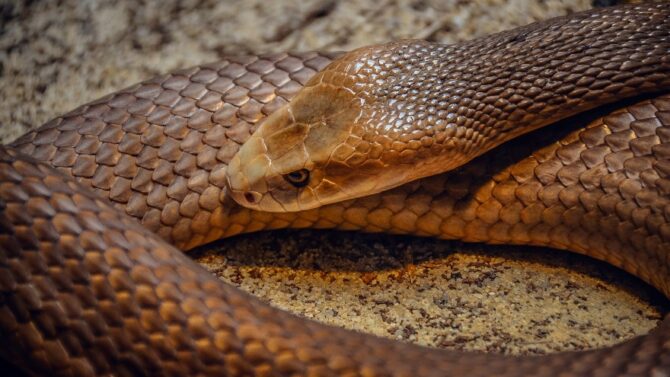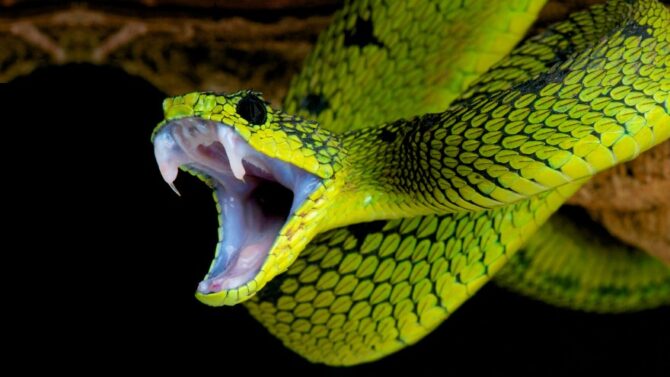Snake lovers know that snakes can make wonderful pets. Some species are safe and docile enough to be domesticated.
Amongst these species, we have the king snake and corn snake.
Both are always advisable for new snake owners because of their natures, but irrespective of their similarities, they still aren’t the same.
Comparing the king snake vs corn snake, both are non-venomous and constrictors. They also have similar care requirements, and in that sense owning one is like owning the other. However, the corn snake is considered less expensive and more docile, while the king snake shows more activeness.
Your choice would depend largely on the differences between both. We’ll look into this in detail.
King Snake vs Corn Snake Comparison
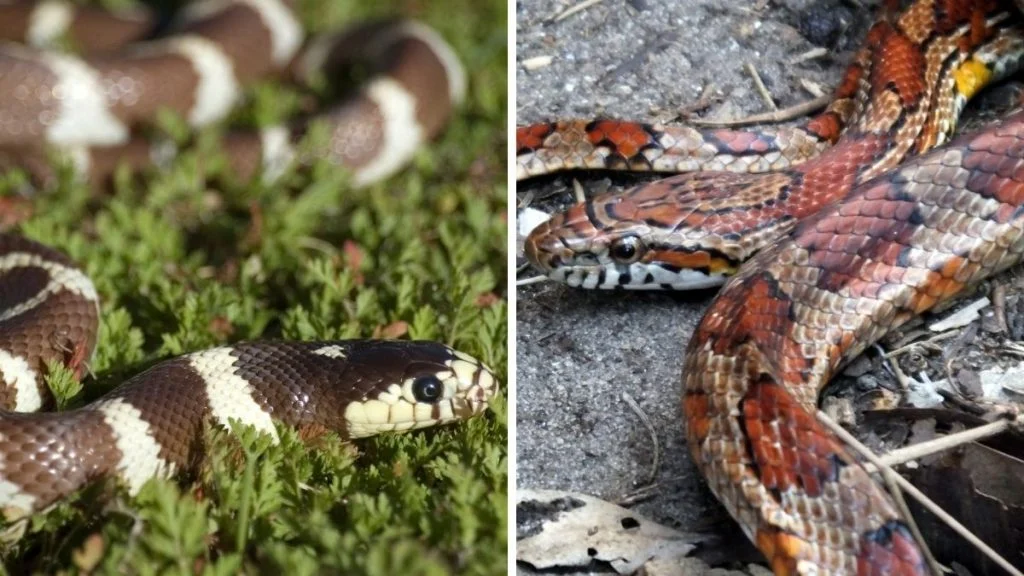
King Snake
- Lifespan: Up to 20 years (In the wild or captive)
- Length: 3 to 4 feet
- Weight: 3 pounds
- Colors: Tan and brown (lighter or darker tones)
- Venomous: No
- Scientific Name: Lampropeltis getula
Corn Snake
- Lifespan: 6 to 8 years (In the wild); Up to 20 years (In captive)
- Length: 61 to 180 cm (Adult)
- Weight: 700 to 900 g
- Colors: Various morphs and colors
- Venomous: No
- Scientific Name: Pantherophis guttatus
King Snake Overview
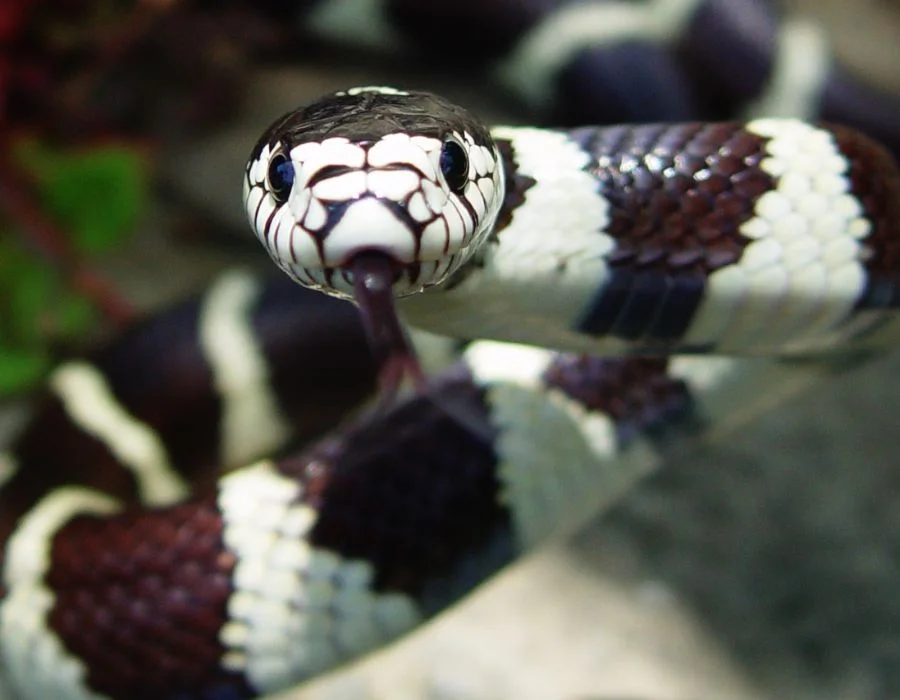
The King snake belongs to the genus Lampropeltis, a genus that covers both the Milk snake and four other species.
Under these species are 45 other subspecies, and all of them are not venomous.
The King snake is a strong predator and is known to eat other snakes, including venomous ones.
It uses constriction to kill prey and is immune to many venoms. Besides snakes, it also preys on lizards, rodents, birds, and eggs.
Corn Snake Overview

The corn snake (Pantheropus guttatus) is a native of North America and is one of the many rat snakes we have.
As you might guess, rat snakes feed almost exclusively on rodents, which is bad news for vermin but good news for you.
The corn snake has no venom but kills its prey using constriction, which consists of holding the prey down till it dies.
This species is so named because it is often seen close to grain stores, and that’s where it finds a lot of rats and other rodents.
Corn snakes are often attacked because of their resemblance with the venomous copper snake.
However, the corn snake is not under a threat. It is listed as “Least Concern.”
Similarities and Differences Between King Snake and Corn Snake
Let’s look into 6 factors under which the corn snake and king snake are similar or different.
These factors often influence the choice of many snake owners, and it might help you determine which is better for you.
Size
In general, the corn snake is smaller than most King snake species. The corn king generally falls between 3 to 4 feet, hardly ever getting to 6 feet.
King snakes vary widely in size, and it is common to see one bigger than the other. The smallest is often at 18 inches, while the biggest can get to 6 feet.
The most popular king snake in the United States is the California king snake, and its size is similar to the corn snake.
That said, be sure to find out the specie (or subspecies) you’re being offered before you make any purchase.
Colors
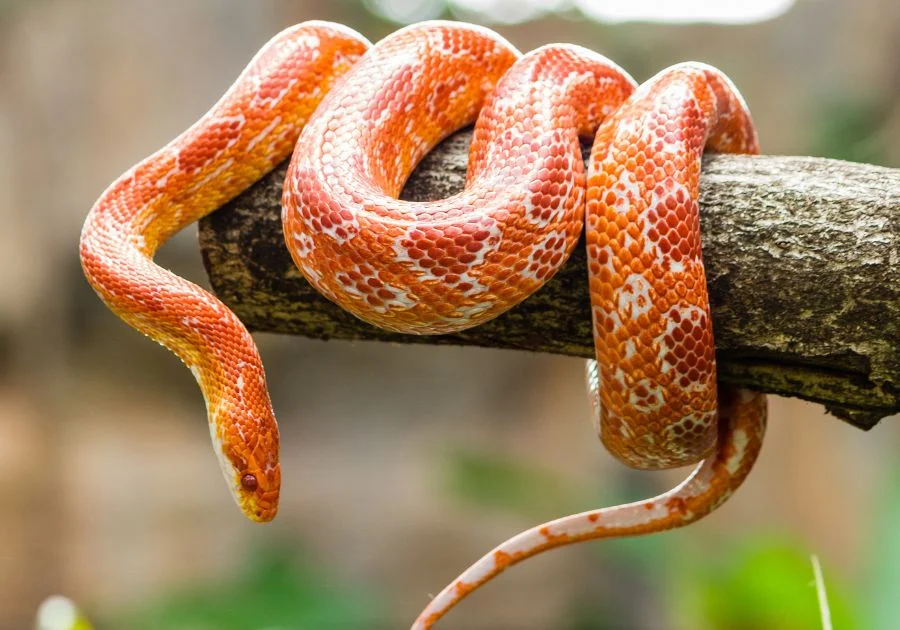
The corn snake has a bright color and unusual patterns, which make it unique.
It tops the king snake in uniqueness, but that doesn’t mean the latter isn’t colorful too.
If your target is uniqueness, the corn snake is for you. However, if you prefer a pet that looks wilder, the king snake might be a better option.

Melanin plays a big role in determining what color either a corn snake or a king snake has.
Any snake with little melanin will appear yellow, orange, red, or white and may not have any brown or black.
Natural Habitat
The king snake’s main home is in North America, and it lives in the United States and Mexico.
Its preferred habitats include tropical forests, shrublands, and deserts. Each specie has a particular region.
The Californian king snake, for example, lives in the deserts and mountains of California.
Corn snakes prefer overgrown fields, trees, flatwoods, farms, and even abandoned buildings.
They can be found in the Southeastern United States. Because they both are in North America, it isn’t uncommon to find them in the same habitat.
Care
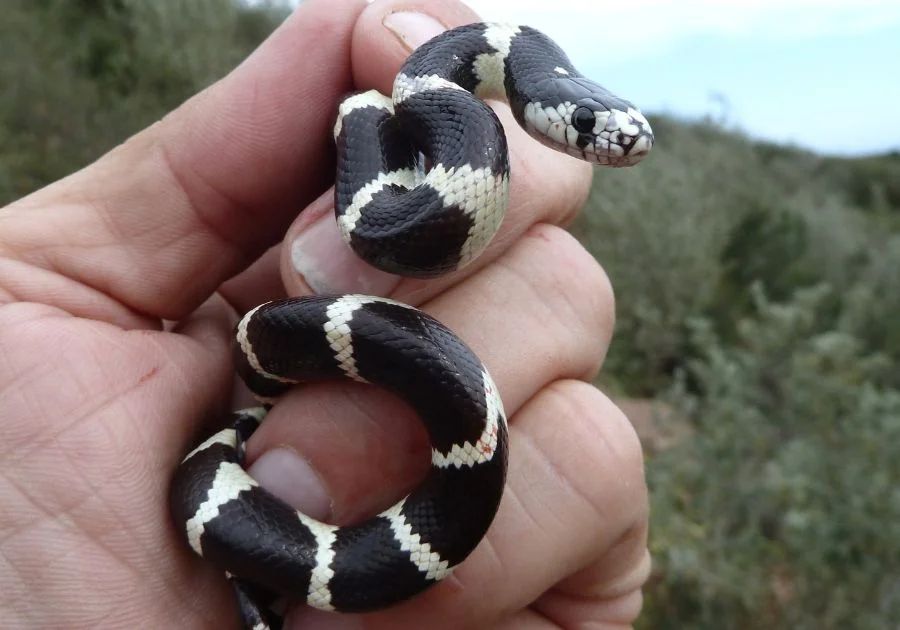
Both species have similar needs, but the corn snake is considered easier to take care of because with the king snake, you must know which specie or subspecies you want and its specific needs.
The California king snake and the Mexican king snake have almost the same habitat need as the corn snake, so there isn’t much difference in caring for them.
Other species like the Florida king snake need a place with a warmer temperature.
The best solution is to figure out what species you’re getting, how it lived in the wild, and how best it can replicate that.
Food
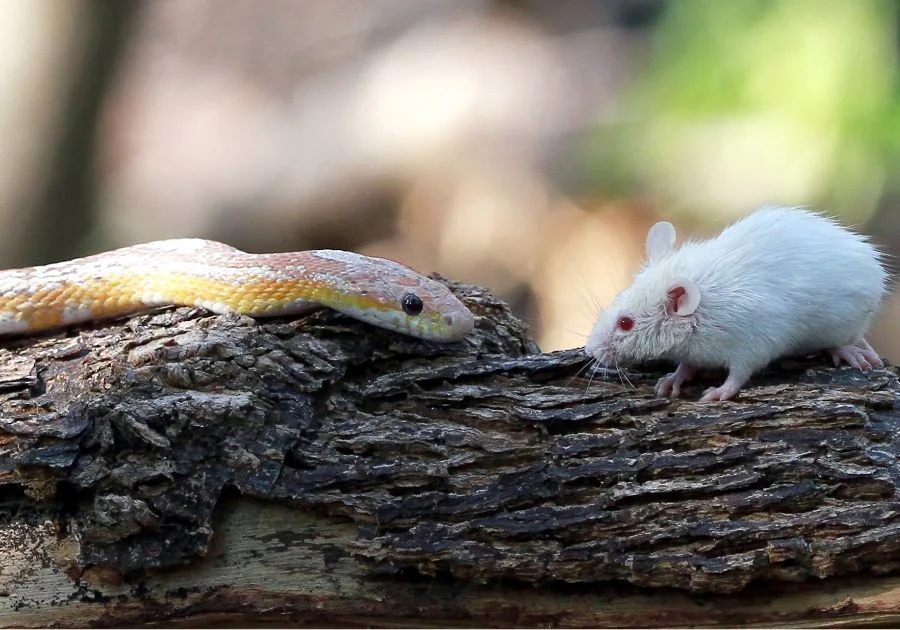
The corn snake and king snake have a similar appetite as they are both big eaters and hardly turn down an opportunity to feed.
Their diet also interlapses as both feeds on rodents and other small creatures like amphibians, lizards, and eggs.
The major difference lies in the king snake’s appetite for other snakes, including poisonous ones.
Corn snakes won’t eat snakes unless the snake is a rival or there aren’t other options.
The king snake is cannibalistic and doesn’t need options. Any other snake in sight is the main meal.
Temperament
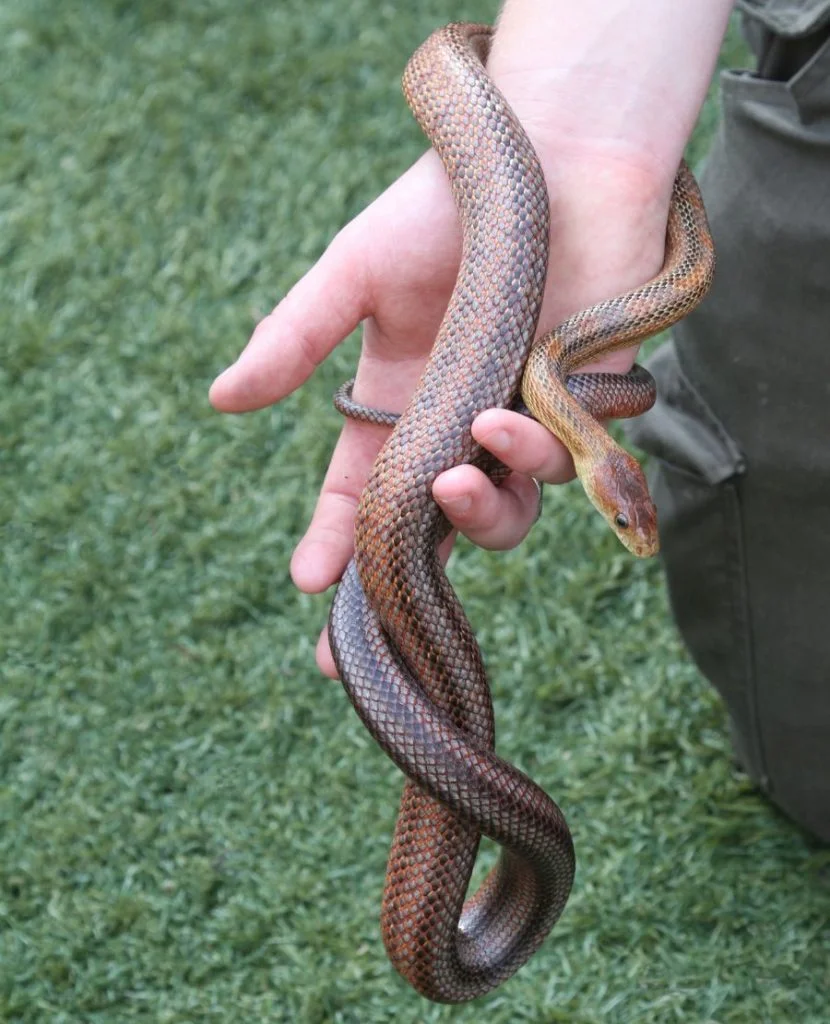
The temperament is the biggest dividing factor between these two. While both have personalities that can fit with any snake owner, they don’t behave the same.
The corn snake is gentle and calm. It might only be nervous when you first get it, but after it gets accustomed to handling it becomes more relaxed.
The king snake is more curious and active. It is also more likely to bite, and though the bite isn’t venomous it hurts.
Some people might still prefer the king snake to the corn snake if they enjoy having an active snake.
FAQs
Are corn snakes bigger than king snakes?
Some Corn snakes and King snakes share similar sizes, but when you consider all the King snakes, many species are bigger than the Corn snakes. It all depends on the King snake used to measure with the Corn snake.
Do king snakes eat snakes?
The King snake is known to hunt and feed on other snakes, even those that should be more dangerous than it. It uses constriction to take down the snake, and it is immune to many forms of venom.
Are King snakes venomous?
The King snake isn’t venomous, making it a good option for first-time snake owners. King snakes belong to the genus Lampropeltis, all of which are non-venomous.
Bottom Line: King Snake vs Corn Snake – Which is a Better Pet?
The king snake and corn snake both make good pets, and they have few differences. The choice depends on you.
Someone who wants a simple, docile pet will go for the corn snake while a person looking for an active snake will go for the king snake.
Whatever choice you make, ensure that you can commit to taking care of your pet.
Check out these interesting articles:
References
California Herps, A Website for the Reptiles and Amphibians of California http://www.californiaherps.com/snakes/pages/l.californiae.html
Animal Diversity Web, University of Michigan, http://animaldiversity.org/accounts/Lampropeltis_getula/
Scientific and standard English names of amphibians and reptiles of North America north of Mexico, with comments regarding confidence in our understanding (PDF), Society for the Study of Amphibians and Reptiles Herpetological Circular, http://ssarherps.org/wp-content/uploads/2014/07/HC_39_7thEd.pdf
Featured Image: Patrick_Gijsbers, WayPhanthit / Getty Images
